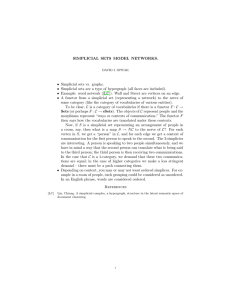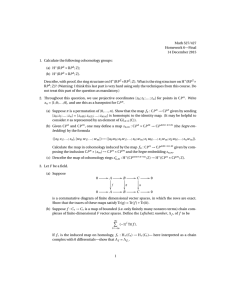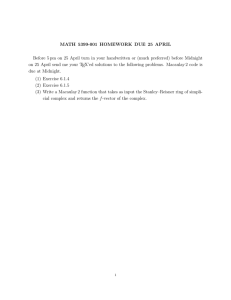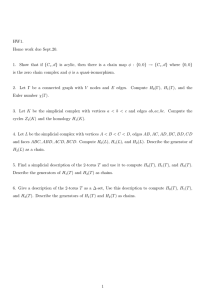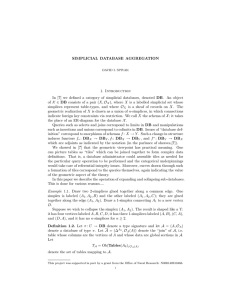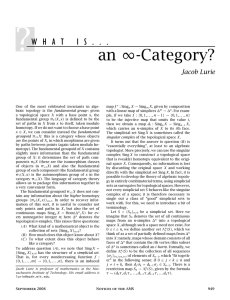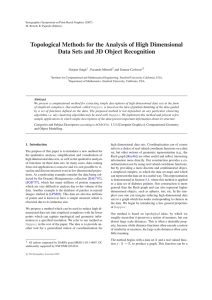18.318 (Spring 2006): Problem Set ...
advertisement
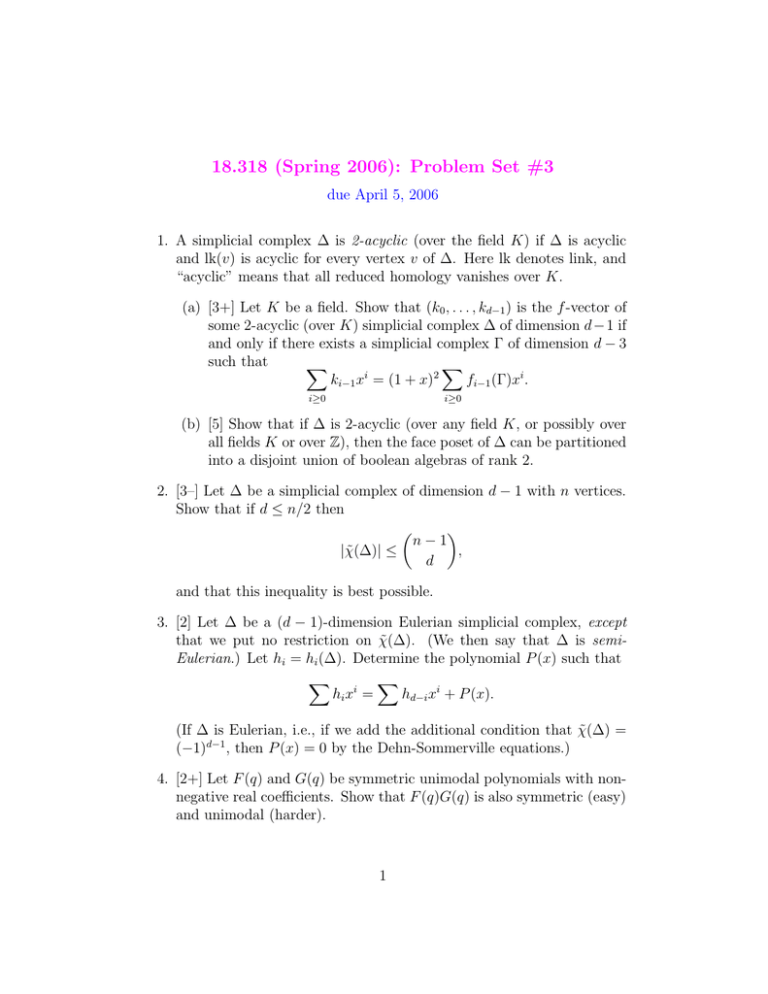
18.318 (Spring 2006): Problem Set #3 due April 5, 2006 1. A simplicial complex � is 2-acyclic (over the field K) if � is acyclic and lk(v) is acyclic for every vertex v of �. Here lk denotes link, and “acyclic” means that all reduced homology vanishes over K. (a) [3+] Let K be a field. Show that (k0 , . . . , kd−1 ) is the f -vector of some 2-acyclic (over K) simplicial complex � of dimension d − 1 if and only if there exists a simplicial complex � of dimension d − 3 such that � � ki−1 xi = (1 + x)2 fi−1 (�)xi . i�0 i�0 (b) [5] Show that if � is 2-acyclic (over any field K, or possibly over all fields K or over Z), then the face poset of � can be partitioned into a disjoint union of boolean algebras of rank 2. 2. [3–] Let � be a simplicial complex of dimension d − 1 with n vertices. Show that if d � n/2 then � n−1 � , |�(�)| ˜ d and that this inequality is best possible. 3. [2] Let � be a (d − 1)-dimension Eulerian simplicial complex, except ˜ that we put no restriction on �(�). (We then say that � is semiEulerian.) Let hi = hi (�). Determine the polynomial P (x) such that � � h i xi = hd−i xi + P (x). = (If � is Eulerian, i.e., if we add the additional condition that �(�) ˜ d−1 (−1) , then P (x) = 0 by the Dehn-Sommerville equations.) 4. [2+] Let F (q) and G(q) be symmetric unimodal polynomials with non­ negative real coefficients. Show that F (q)G(q) is also symmetric (easy) and unimodal (harder). 1 5. [2+] A polynomial a0 + a1 x + · · · + an xn with positive real coefficients is log-concave if a2i � ai−1 ai+1 for 1 � i � n − 1. Show that if F (x) and G(x) are log-concave, then so is F (x)G(x). � Hint. Let F (x) = ai xi . Consider the infinite matrix AF = (aj−i )i,j�0 and similarly AG . (Set aj = 0 if j < 0 or j > deg F .) Apply the Cauchy-Binet theorem to certain minors of AF AG . 6. [2–] A (0, 1)-necklace of length n and weight i is a circular arrangement of i 1’s and n − i 0’s. For instance, the (0, 1)-necklaces of length 6 and weight 3 are (writing a circular arrangement linearly) 000111, 001011, 010011, and 010101. (Cyclic shifts of a linear word represent the same necklace, e.g., 000111 is the same as 110001.) Let Nn denote the set of all (0, 1)-necklaces of length n. Define a partial order on Nn by letting u � v if we can obtain v from u by changing some 0’s to 1’s. It’s easy to see (you may assume it) that Nn is graded of rank n, with the rank of a necklace being its weight. Show that Nn is rank-symmetric, rank-unimodal, and Sperner. 7. [3] Is the f -vector of a pure simplicial complex unimodal? 2
